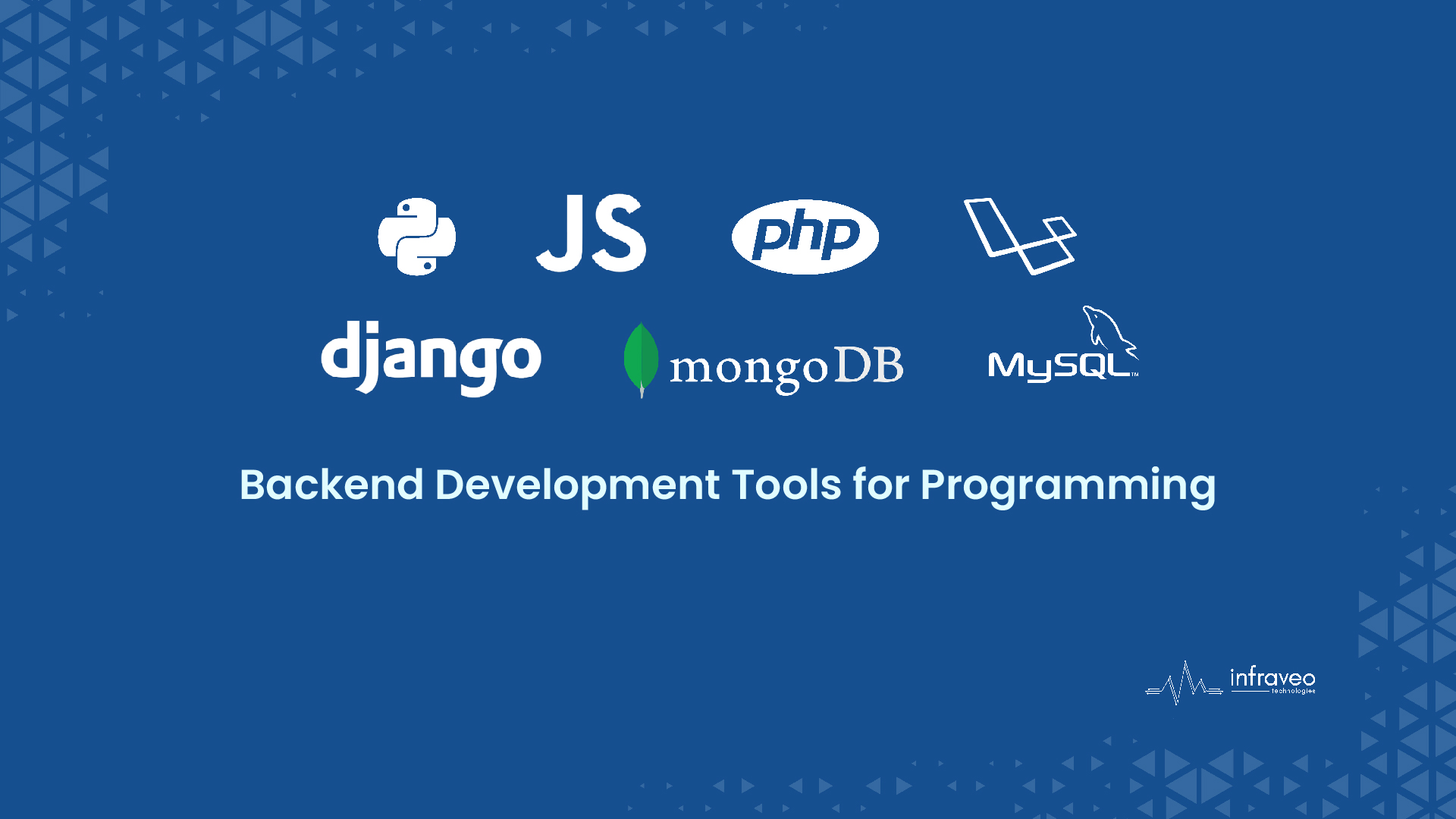Introduction
Backend development and Front-end development are the two primary forms of web development. A programmer is responsible for creating the server-side code of a web application. He/She oversees creating libraries, APIs (Application Programming Interfaces), bettering data architecture, and interacting with databases. The programmer is familiar with back programming languages, servers, databases, and APIs. They utilize specialized technologies to create beautiful web applications.
What are Backend Development Tools?
Backend refers to the server-side of evolution, where the programmer focuses on the efficiency of the website. It combines servers, databases, programming, and applications. The program’s back-end code can interface with the database to read, write, update, or remove data.
The following are the best backend development tools for web developers:
Programming Languages:
1) Python:
It is a high-level, all-purpose programming language that supports several paradigms, including Object-Oriented, Procedural, and Functional programming. Several well-known platforms use Python as part of their software platforms, including Instagram, Spotify, Google, and others. The language offers users several outstanding features, including compatibility with innovative technologies, support for a wide range of libraries, simplicity of integration with other languages, support for GUI programming, etc.
2) JavaScript:
JavaScript is a programming language that every website employs, thus it is best to master it. The preferred language among web developers is one that can be utilized in both the front and back-ends of a website.The language may be used, widgets in addition to sites and things as well. The imperative and structured nature of this specific language, along with its light weight, support for object-oriented programming, platform independence, and many other noteworthy attributes, are just a few. The fact that JavaScript can be used for both front and back programming is the best feature of all.
3) PHP:
The term “Hypertext Preprocessor” refers to a scripting language (PHP).Worldwide, PHP is a popular web development language. This specific language is selected for web development for several important reasons, including increased flexibility and security, cross-platform portability, OOPs characteristics, and ease of interface with HTML, CSS (Cascading Style Sheets), JavaScript, and other technologies. The language is also quite simple to learn and utilize.
Frameworks:
4) Laravel
In the tech world, Laravel is one of the most well-liked PHP frameworks. The Model-View-Controller (MVC) architectural pattern is used by this open-source web framework, which also offers you a variety of useful tools including the built-in command-line tool Artisan, pre-installed Object-Oriented and Modular libraries, Eloquent ORM (Object Relational Mapping), Template Engine, and many others.
5) Django
An easy-to-use open-source framework called Django makes it possible to create websites more quickly. The model-template-view (MTV) design pattern is used in the framework’s Python design. For so many web development areas, such as social networking platforms, scientific computing platforms, content management systems, etc., developers and professionals use Django.
Databases:
6) MongoDB
Document-oriented database MongoDB is cross-platform. It is very accessible for free and is loved by web developers. Many features are available, including searching, file storage, aggregation, and transactions. MongoDB provides these helpful tools to you. This specific database’s security and data recovery features are also far better than those of various other database management systems.
7) MySQL
An open-source relational database management system for web-based applications is MySQL. It is a quick and effective database with improved scalability, usability, and dependability. Additionally, MySQL offers capabilities like built-in replication support, strong indexing support, SSL support for secure connections, powerful data encryption, and cross-platform compatibility.
Conclusion
The server-side of a web application is constructed by a backend developer. The backend is responsible for the internal operations while the frontend interacts with the user. A frontend still might not function without a backend, but to build a web application that is completely functional, a frontend and backend must be properly connected. Web Development is all about building, creating, and maintaining websites. We at Infraveo Technologies help in providing the necessary tools to succeed by trying to give a wide range of services including custom software development, website / web app development, cloud services, and technologies that may help you manage your business more effectively by providing you the support, growth, and quality service you need. For more information, please click here.




